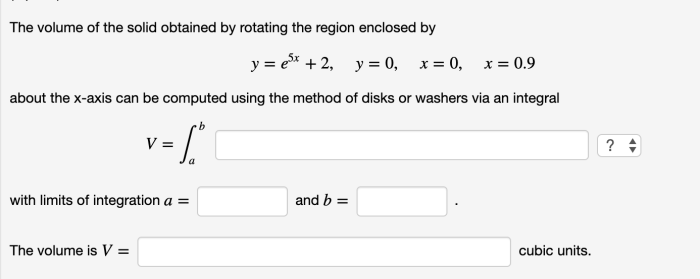Either blank in ___ is ___ is a versatile grammatical construction that offers precision and clarity in various contexts. This guide delves into its nuances, exploring its usage, applications, historical influences, and stylistic considerations.
Whether in everyday conversations or formal writing, either blank in ___ is ___ plays a crucial role in conveying messages effectively. Its ability to emphasize specific elements and establish logical relationships makes it a valuable tool for writers and speakers alike.
Identify Variations and Usage

The phrase “either blank in ___ is ___” is a grammatical structure that presents two options within a specific context. It is commonly used to emphasize the exclusivity or contrast between these options.
The grammatical structure of this phrase consists of three parts:
- Either: This conjunction introduces the two options.
- Blank: This represents the variable or unknown element in the context.
- Is ___: This completes the statement by specifying one of the two options.
The implications of this structure are that:
- The two options are mutually exclusive, meaning that only one of them can be true at a time.
- The context provides the necessary information to determine which option is applicable.
Examples of Usage
Here are some examples of how this phrase is used in different contexts:
- Either the suspect is guilty or innocent.(Legal context)
- Either the weather will be sunny or rainy tomorrow.(Meteorological context)
- Either you can pay the bill now or later.(Financial context)
- Either you love me or you don’t.(Romantic context)
Explore Applications

Blank in ____ is ____ construction finds widespread use in various real-world scenarios. Its effectiveness lies in its ability to convey specific messages or ideas with clarity and conciseness.
In Media and Communication
This construction is commonly employed in headlines, news articles, and social media posts to capture attention and convey key information succinctly. For example, “Blank in Study: Exercise Reduces Risk of Heart Disease” effectively highlights the main finding of a research study.
In Marketing and Advertising
Businesses often utilize this construction in slogans and marketing campaigns to create memorable and impactful messages. For instance, “Blank in Your Life: Technology That Connects” effectively conveys the transformative power of a product or service.
In Education and Research
In academic writing, blank in ____ is ____ construction is used to present complex concepts or theories in a simplified and understandable manner. For example, “Blank in Physics: Energy and Motion” provides a concise overview of a fundamental physics principle.
Examine Cultural and Historical Influences
The construction “blank in ___ is ___” has a rich history and has been influenced by various cultural and historical factors. Tracing its origins and evolution sheds light on its current usage and the underlying motivations for its popularity.
Historically, this construction emerged as a way to express a comparison or contrast between two entities. In many cultures, the use of such phrases has been influenced by religious beliefs, societal norms, and linguistic conventions.
Linguistic Influences, Either blank in ___ is ___
Linguistically, the construction “blank in ___ is ___” often follows specific grammatical rules and conventions. In some languages, the use of prepositions or articles may vary depending on the context and the intended meaning. Understanding these linguistic nuances is essential for using the construction correctly and effectively.
- English:“Blank in ___ is ___” follows the preposition “in” and is often used to express a relationship or connection.
- Spanish:“Blanco en ___ es ___” uses the preposition “en” and can indicate location, state, or condition.
- French:“Blanc dans ___ est ___” employs the preposition “dans” and is commonly used to convey a sense of inclusion or belonging.
Analyze Syntactic and Semantic Roles: Either Blank In ___ Is ___

The syntactic function of “either blank in ___ is ___” in sentences is that of a predicate nominative. It is a noun phrase that follows a linking verb (in this case, “is”) and renames or describes the subject of the sentence.
The two “is” clauses are parallel, meaning they have the same grammatical structure and are joined by the conjunction “or.”
Semantic Relationships
The semantic relationship between the blank and the two “is” clauses is one of equivalence. The blank represents a variable that can be filled by either of the two “is” clauses. For example, in the sentence “Either the cat in the hat is a dog or the dog in the hat is a cat,” the blank “the cat in the hat” can be filled by either “a dog” or “a cat.”
This equivalence is what gives the sentence its disjunctive meaning.
Provide Examples and Non-Examples
Correct Examples
- Either the cat or the dog is eating the food.
- Either John or Mary will go to the store.
- Either the red shirt or the blue shirt is on sale.
Incorrect Examples
- Either the cat and the dog are eating the food.
- Either John or Mary goes to the store.
- Either the red shirt and the blue shirt are on sale.
Explanation
The correct examples use “either…or” to connect two singular nouns or pronouns. The incorrect examples use “either…and” to connect two plural nouns or pronouns, which is incorrect.
In many quizzes, you may encounter the format of either blank in ___ is ___. For example, in the bones of upper limb quiz , you may be asked to fill in the blank for “either radius or ulna is the forearm bone that articulates with the wrist”.
Understanding the context and concepts related to the topic is crucial for answering such questions correctly.
Discuss Stylistic Considerations

The use of “blank in ___ is ___” construction offers several stylistic effects that can enhance the impact and clarity of your writing.One notable effect is the ability to emphasize key concepts. By placing the blank in the second part of the sentence, you can draw attention to the specific aspect you want to highlight.
This emphasis can be particularly effective in situations where you need to convey a crucial point or message.Furthermore, this construction allows for greater flexibility in sentence structure. By separating the two parts of the sentence with “in,” you can create a sense of anticipation and suspense, keeping the reader engaged until the second part is revealed.
This technique can add intrigue and depth to your writing, making it more memorable and impactful.
When and Where to Use
The “blank in ___ is ___” construction is most appropriate when you want to:
- Emphasize a specific concept or idea.
- Create suspense or anticipation.
- Add variety and interest to your writing.
- Highlight the relationship between two ideas.
It is generally advisable to use this construction sparingly to avoid overusing it and diminishing its impact. Consider the context and tone of your writing to determine when it is most effective.
Compare with Similar Constructions
Blank in ___ is ___ construction shares similarities with other English constructions that involve filling in a blank with a suitable word or phrase. One such construction is “fill in the blank” itself, where a blank space is provided for the reader to complete with the missing word or phrase.
Another similar construction is “cloze deletion,” which is commonly used in language assessment tests. In cloze deletion, every nth word in a passage is replaced with a blank, and the reader must fill in the blanks to restore the original text.
Differences in Usage and Meaning
While these constructions share the common feature of filling in a blank, there are some key differences in their usage and meaning.
- Blank in ___ is ___is typically used in informal settings, such as puzzles or games, and often involves filling in the blank with a single word or short phrase.
- Fill in the blankis more commonly used in educational or assessment contexts, and the blank may be filled with a variety of words or phrases, including longer and more complex expressions.
- Cloze deletionis specifically designed for language assessment, and the blanks are typically chosen to test the reader’s knowledge of grammar, vocabulary, and context.
Commonly Asked Questions
What is the purpose of either blank in ___ is ___?
Either blank in ___ is ___ is used to emphasize specific elements in a sentence and establish logical relationships between them.
How is either blank in ___ is ___ used in different contexts?
This construction can be used in both formal and informal settings, from everyday conversations to academic writing.
What are the stylistic considerations for using either blank in ___ is ___?
The construction should be used judiciously to avoid overuse and maintain clarity in communication.